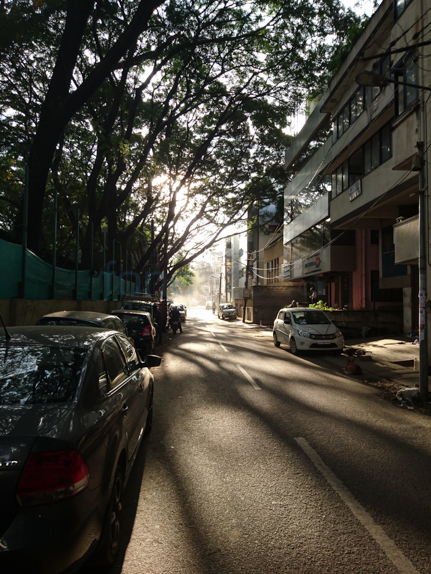
As someone who writes about smartphones and gadgets for a living, you are bound to have come across almost every device that releases in the market. In the case of the Sony Xperia family, I had the pleasure of not just using but owning almost every flagship device released in the Z family. This includes the Z, Z Ultra, Z1, Z2 and Z3 in that order.
The reason I got the Xperia Z was simple, it was waterproof. Ever since I was a kid, I had read about these waterproof phones available in Japan and that was something I always wanted to have on a phone. It was finally possible for people outside of Japan to own one and thats the main reason why I got it. The Xperia Z was disappointing in a number of ways but showed promise in a few others. You knew that Sony was on the right path but still had a lot of work to do. With every generation, they revealed something that was worth upgrading for me despite being released in such quick succession. With the Z1, it was the 20.7 Megapixel sensor. With the Z2, it was the bigger screen, 3GB of RAM and 4K video recording. finally with the Z3, it was the metallic design, the new colour choices and the fact that I had rendered my Z2 unusable after a small accident. The battery life too was one of the best on any smartphone on the Z2, Z3 and Z3 Compact. While other phone were struggling to make it past half a day, these phones would last you through till the next morning if needed.
Then Sony decided that they don’t want to release a new model twice a year but at the same time they did want to. This is how the Z3+ was born. While the jump from Z2 to Z3 wasn’t that big either especially in terms of specifications, it still brought about other changes that could possible entice some users. People expected a Z4 but they got a Z3+ which housed the Snapdragon 810 which at the time was more of a question mark after seeing the issues it caused on the HTC One M9 and LG G Flex 2. The battery capacity was reduced too and while the Z3 did perform as well or even better than the Z2 with a smaller battery capacity, that wasn’t the case with the Z3+. The final nail in the coffin was when Sony announced the device would be a Japan only model until further notice. Then Sony seemed to have a crisis of sorts as they announced the same Z3+ with a 1440p panel, a beefier battery and built-in wireless charging as the Z4v in America which would be an exclusive to Verizon. While things were confusing for both buyers and reviewers for sometime, things got clearer at IFA where they announced 3 new products to the Z series. The Z5, Z5 Compact and the Z5 Premium. The Z5 is a direct successor to the Z3+ and brings around quite a bit of changes to the table. It is probably the biggest jump in the Z lineup since the Z2 and does seem like it will put up a fair fight with competitors. Lets dive into the review to take a look at the device in detail.
Unboxing
We have already unboxed the Sony Xperia Z5. To check out the unboxing, watch the video below:
httpv://www.youtube.com/watch?v=DdARsXrQhPE
The contents of the box are:

- Sony Xperia Z5 Dual smartphone in Gold colour
- Micro USB Cable
- Sony Quick Charger UCH10 (5V/1800mA (9W), 9V/1700mA (15.3W), 12V/1275mA (15.3W))
- Startup guide and other manuals
Video Review
httpv://www.youtube.com/watch?v=JOBcpirppyw
Design, Materials and Build Quality
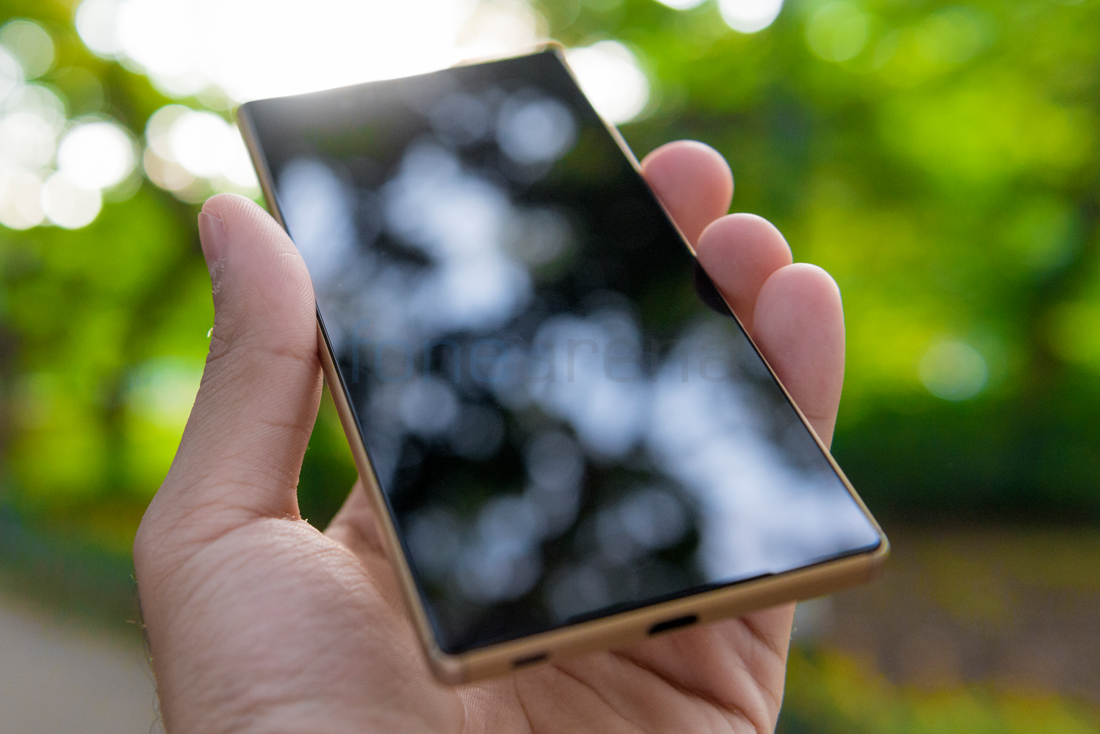
As with every Z series smartphone so far, the Sony Xperia Z5 has a design that screams out Sony’s design language. In terms of footprint size, the Z5 measures the exact same as the Z3. The weight too remains almost the same but the Z5 is 2 grams heavier. Despite the similar sizes, the devices still look quite a bit different. For starters, the stereo speakers on the front have been re-arranged to match the position on the Z2 which we felt was better than the speaker positions on the Z3. The front and the back are majorly made of glass just like on the Z3 with a metal frame. However, the glass panel at the back now has a very matte soft touch finish compared to the glossy ones of the past Z series smartphones. The Z5 Premium on the other hand has a mirror finish at the back.
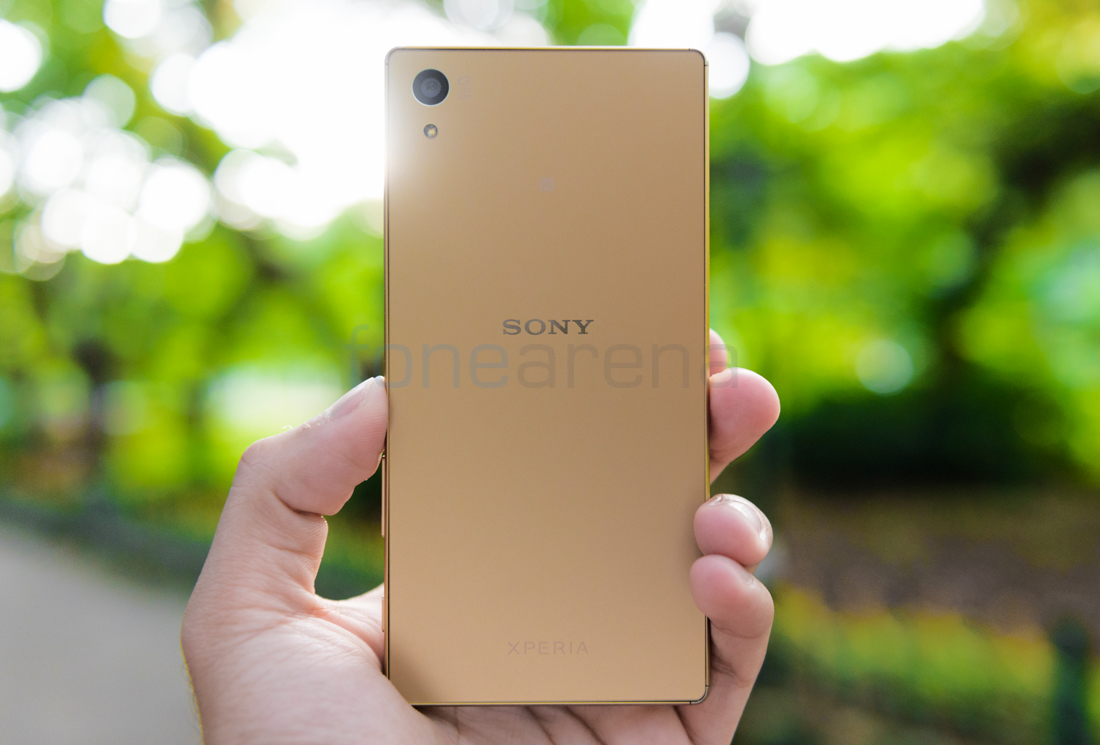
The front is dominated by the 5.2″ display. Above the display, you have the front facing camera, LED notification light, ambient light sensor, proximity sensor as well as the first speaker. Below the display, you find the second speaker grille which also houses the primary microphone.
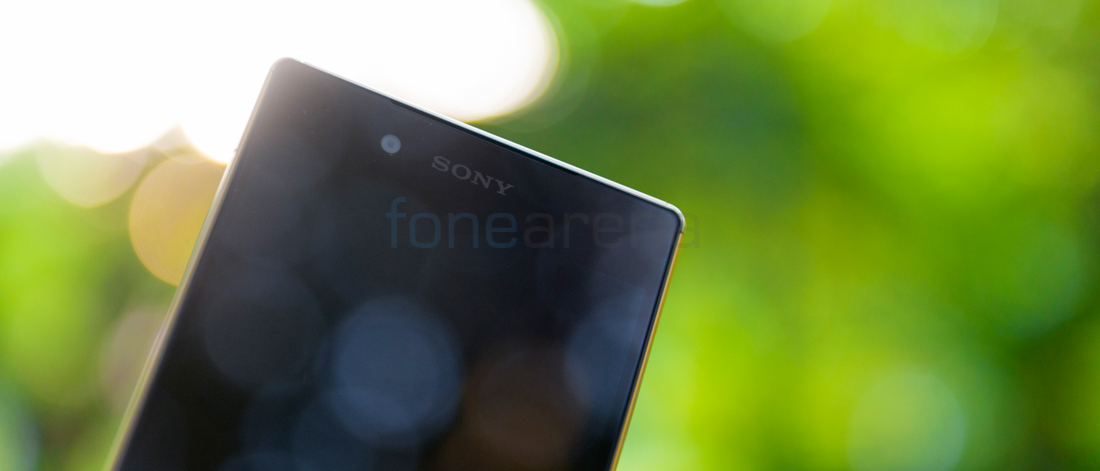
At the top, you have the 3.5mm audio jack as well as the secondary microphone. At the bottom , you have the lanyard eyelet and the microUSB port which is not covered anymore. Sony first debuted the uncovered microUSB port with the M4 Aqua which was announced at MWC 2015. We had done a full-fledged test of it underwater both at the show floor as well as with our underwater photo gallery of the device. The same was introduced on the Z3+ and we are delighted to see it appear on the Z5 as well. It is fine to cover the microSD slot and the SIM slots since you don’t really need to access it all that often but the microUSB port is something you’ll need to use at least once a day. Many people have complained about the port flap breaking on their phones and as a result rendering the waterproofing ability of the phone useless. In this case, the chances of the port cover breaking are much lower so we welcome the change.
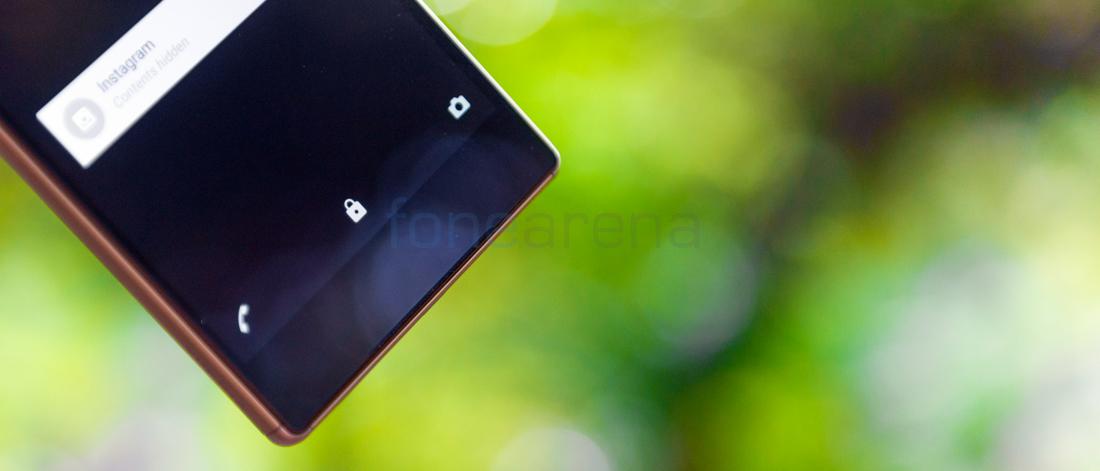
At the left side, you have a flap which houses the SIM tray and microSD card slot. The variant we have is the Dual SIM one. Depending on the region, you may get the single SIM or Dual SIM variants or both. At the right side, you have the new power button which also houses a fingerprint sensor. We will discuss more about that later on in a dedicated section. Below the power key, you have the volume rocker button and the two stage camera shutter button. While both the keys are sufficiently raised from the body and offer good feedback when pressed, the volume keys are positioned a bit too low for our liking. The position of the volume rocker isn’t where your thumb can easily access during a phone call for example and thus makes controlling the volume a bit harder and awkward than before.
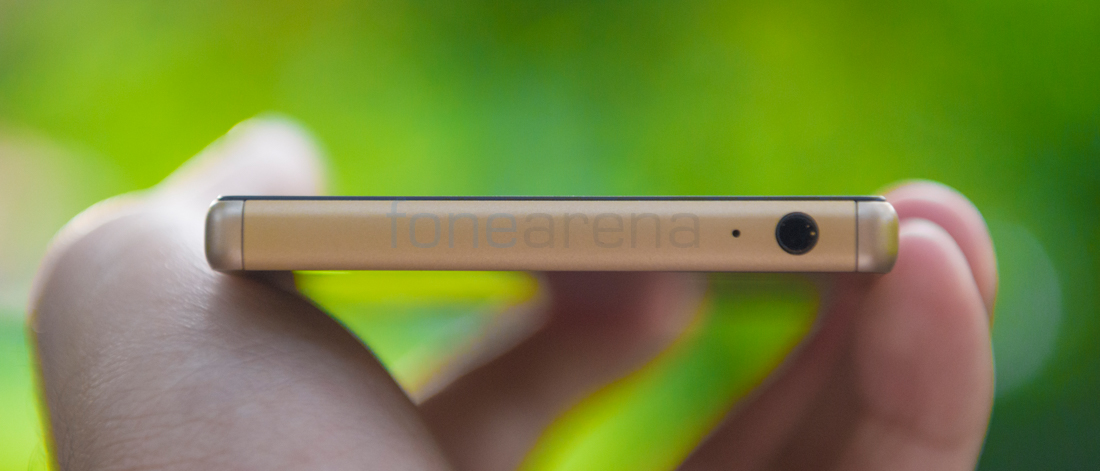
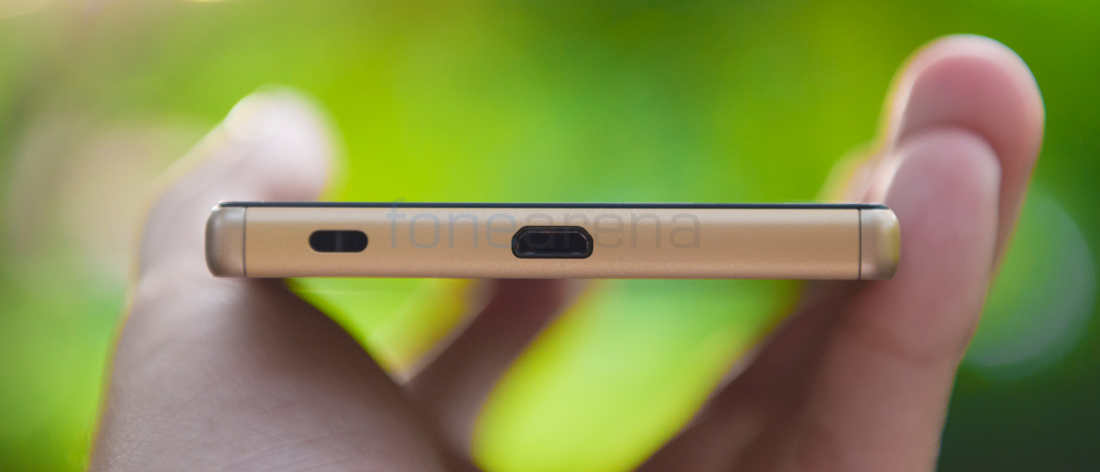
All the four corners have protector caps as well. Moving over to the back, you have the primary camera at the top left corner. Below that, you find a single LED flash. There is a NFC logo towards the top, Sony branding in the centre and XPERIA branding at the bottom. The Z5 comes in White, Graphite Black, Gold and Green colours. We were hoping to see the Copper colour from the Z3 that we loved very much but that has been replaced by the Gold variant which we are reviewing. The Gold too looks nice but nothing as classy or unique as the Copper variant. Perhaps if you want something unique, you would be better off getting the Green one instead. The glass at the back is quite resistant to fingerprints thanks to the matte finish. It is also quite scratch resistant and during our time of testing, we were happy to observe that we didn’t get any scratches on the back.
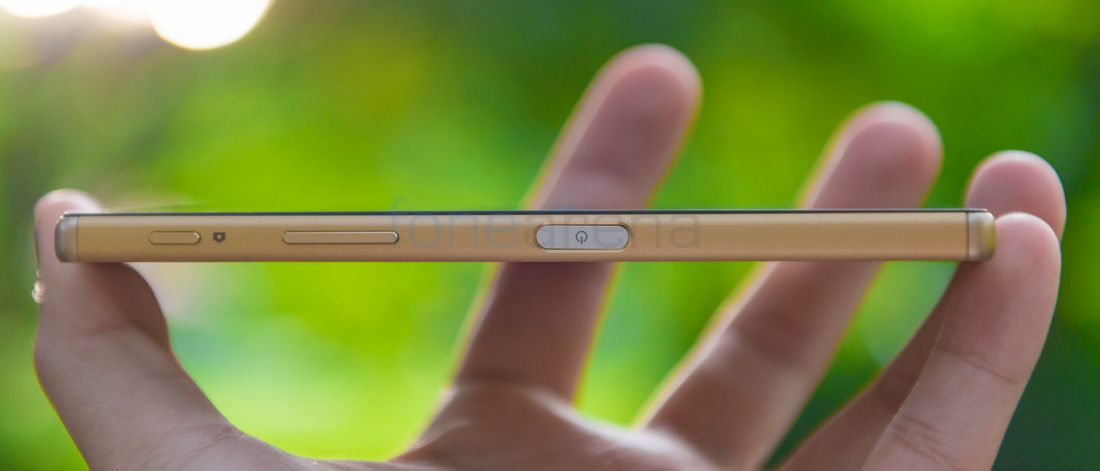
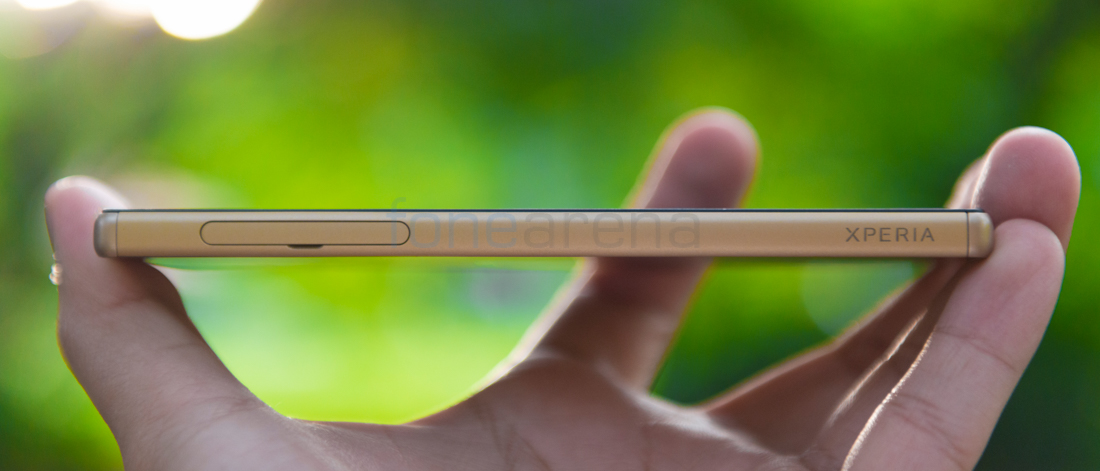
The sides of the Z5 are quite flat unlike the Z3 which was quite rounded. However, it still quite easy to handle and doesn’t cause any discomfort to your hands as such. The matte glass at the back also provides quite a lot of grip too. The entire phone is built really well and gives a real “Premium” feel that makes it the best built phone in the Z series till date. The phone is IP68 certified for use in water upto 1.5 metres depth for a duration of 30 minutes. However, for some reason, Sony doesn’t seem as encouraging of users to use their phones underwater anymore as they were with previous generations. It is also dust proof.
Display
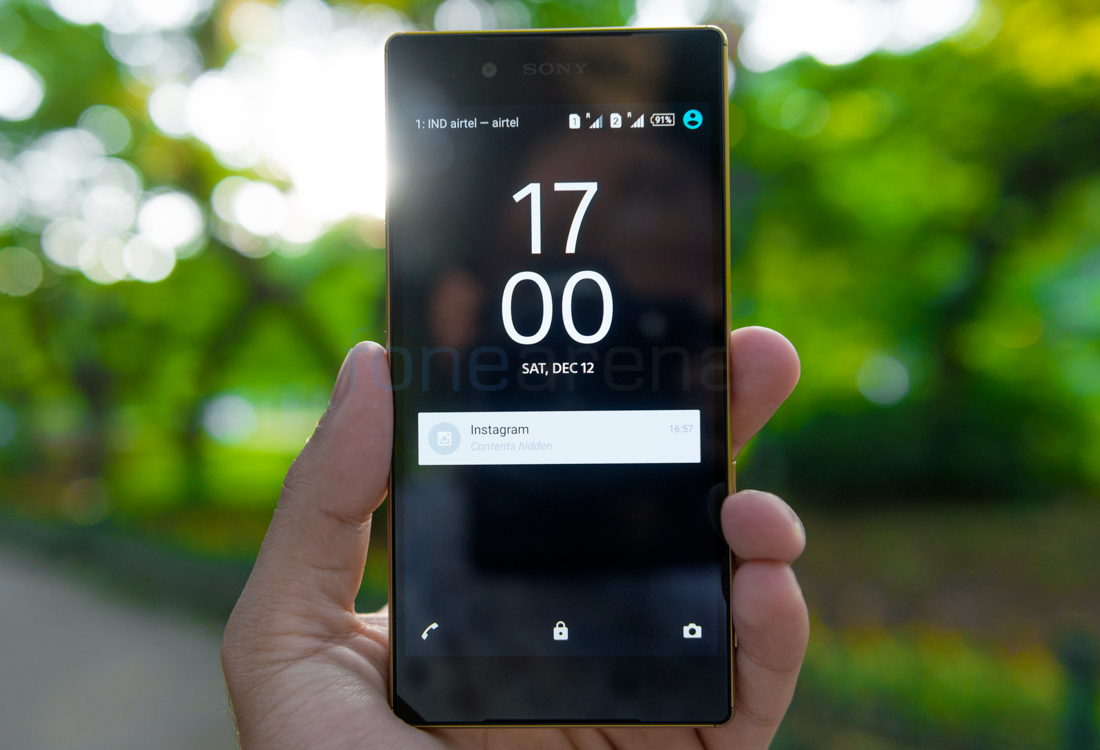
The Sony Xperia Z5 has a 5.2″ display with a resolution of 1080p. Add in Sony’s own technology such as the X-Reality engine and Triluminous display and you have quite a good display. The resolution and display remain the same since the Z2. However, there are several improvements to the display in terms of brightness and sunlight legibility mostly owing to a lesser reflective display itself. The resolution is good enough for the size and we didn’t face any issues with lack of sharpness in text or images. A 1440p panel would have brought it on par with most competitors as far as specifications are concerned however, it would’ve been an unnecessary drain on the battery life. Probably the biggest improvement is the contrast levels which are higher thanks to the deeper blacks. The display is protected by an unspecified scratch resistant glass with Oleophobic coating which seems to do a good job not just at protecting the display from scratches but also has reduced the fingerprint prone nature of the Z series phones of the past.
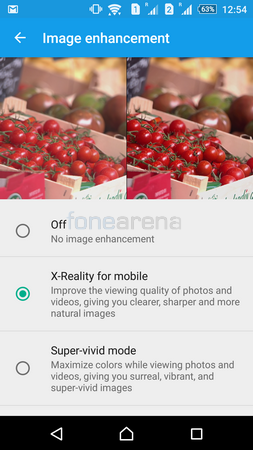
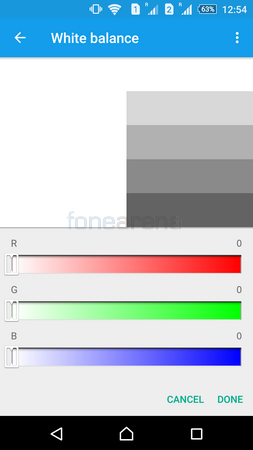
Coming to the software, the user can opt for a default display mode or go ahead with either an X-Reality Engine or a super-vivid mode. The X-Reality engine bumps up the saturation and contrast and so does the super-vivid mode but to a larger extent. Users can switch on glove mode in case they want to operate their smartphone using gloves. There is a white balance tool to tweak the display perfectly to your liking using the RGB sliders. The phone supports double tap to wake up but there is no option to lock the device using double tap. Finally, there is a smart backlight control mode where the phone recognises when you are holding it and makes sure that it stays awake and unlocked. Once you place it on a table for example, the device will go to sleep as per the time set by the user.
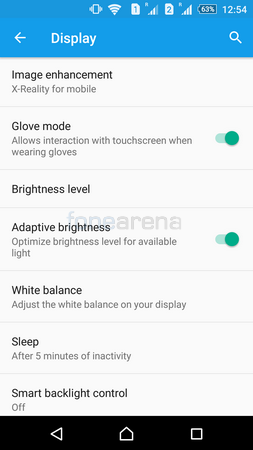
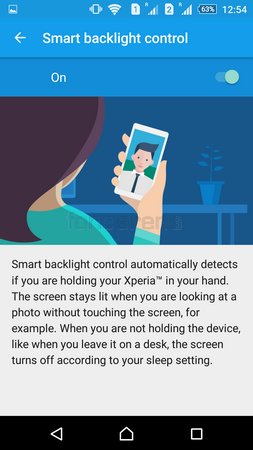
Fingerprint Sensor
For the first time in the Z series, the Z5, the Z5 Compact and Z5 Premium all carry fingerprint sensors. The implementation is quite unique too as the fingerprint sensors are housed within the power key on the right side. Almost every other smartphone has a fingerprint sensor on the front within the home button or at the back, below the camera sensor. I personally prefer the fingerprint sensor to be within the home key but after using the Z5, I am quite liking the side implementation too. The ideal finger to register for the Z5 would be your thumb on the right hand and your index finger on your left hand as these are the fingers that will rest on the sensor when using on the right hand and left hand respectively.


However, you are free to register any fingerprint of your choice and you can register upto 5 fingerprints at a time. This could include, fingerprints of people you are close to as well. Registering a fingerprint is quite easy as the user just has to pick a finger, place it on the sensor, lift the finger and place it again when the phone vibrates. After detecting your finger multiple times, the fingerprint gets registered. You can choose to remove a fingerprint later on as well. The fingerprint sensor is quite sensitive and require you to just place your finger on the sensor but if the sensor or your finger is remotely wet or sweaty, it may not recognize it. There is a backup pin that users can set to unlock the phone when that happens.

As of now, the fingerprint sensor can be used to only unlock the device but we should see several more uses with it especially once the device gets Android 6.0 Marshmallow. In order to unlock the device, the user must first wake the device up either by pressing the power key or by double tapping the screen (if you have enabled that option). Then you can place your finger and unlock the device.
Calling and Messaging
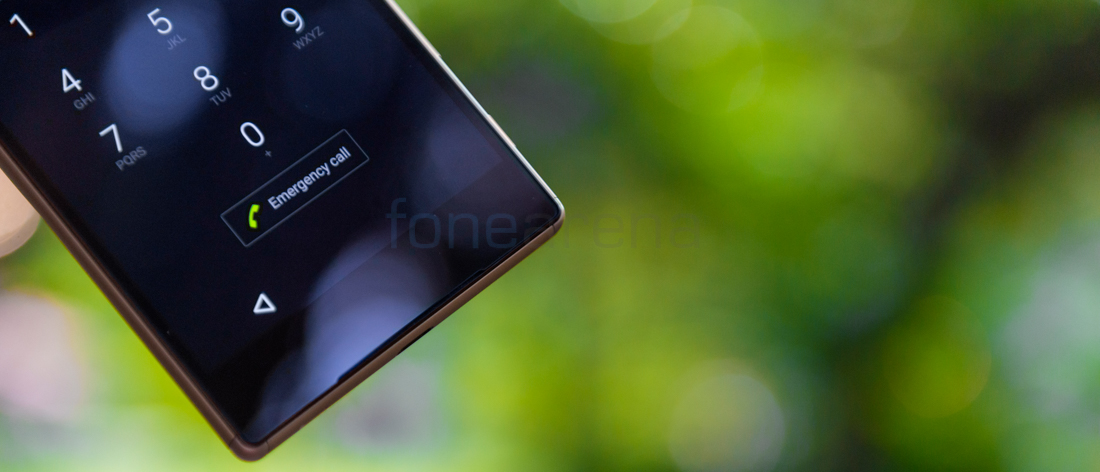
Audio quality is quite good for calls both over the earpiece as well as the speakers. Volume is good enough in all environments from the earpiece but may find it a bit low when in a noisy environment and you use the speaker. Your voice gets to the other end clearly thanks to the noise cancelling secondary microphone. Being a dualSIM phone, the user can easily pick the SIM to place the call with before making the call. The dial-pad is large and easy to use and read.
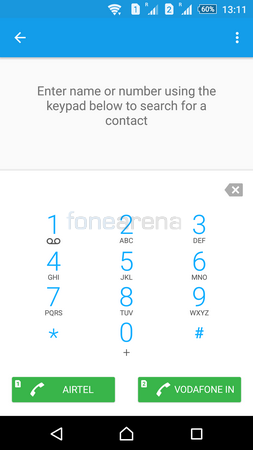
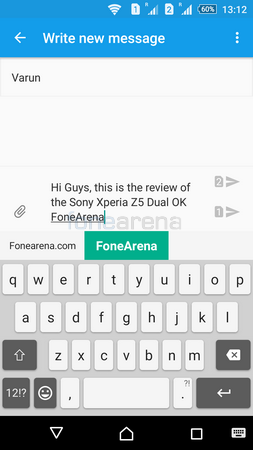
The Z5 comes pre-loaded with the Xperia keyboard that is quite easy to use and has a well spaced layout. You can definitely choose to install Google Keyboard or any other keyboard of your liking from the Play Store if needed as well. Just like with the case of the dialer, there are quick shortcuts that allow the user to select the SIM with which he/she wants to send the message across.
Software and UI
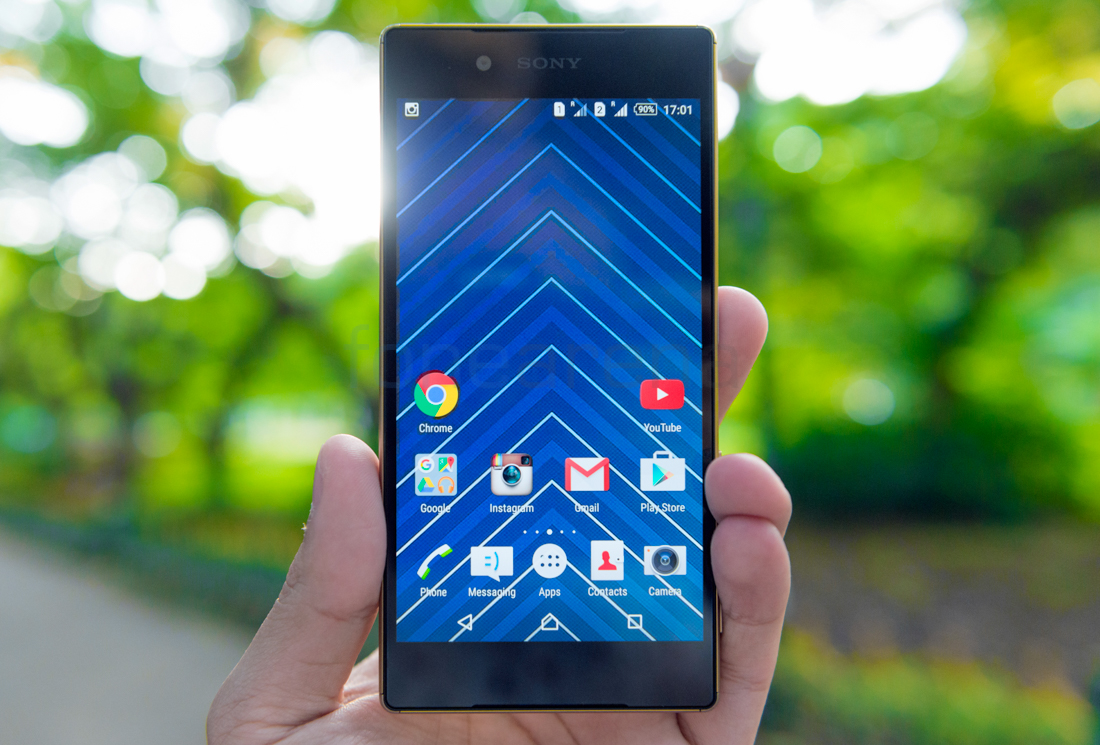
The Z5 comes pre-loaded with Android 5.1.1 Lollipop with Sony’s own UI on top. The UI layer isn’t too heavy and retains a lot of the stock Android features and layout. This also makes sure that the device performs smoothly without much lag or hiccups. The Z5 will most definitely receive the update to Android 6.0 Marshmallow in the near future.
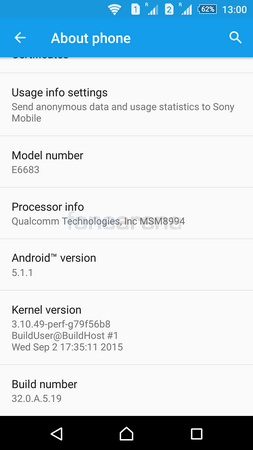
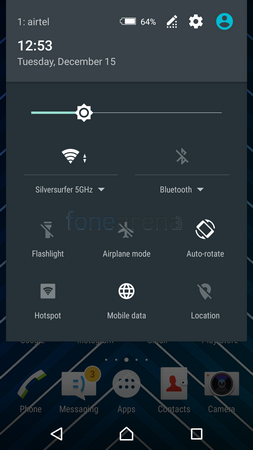
Users have the ability to choose what system icons to be displayed on the notification bar at the top. Pulling it down, will show you the list of notifications as well as quick toggles and shortcuts. There is the user information as well as a day/date/time information and a brightness slider. Additionally, users can also change the themes to adjust the look and feel of their device. The Z5 comes pre-loaded with several different themes. If none of them are to your liking, you could always download additional ones online from their theme store.
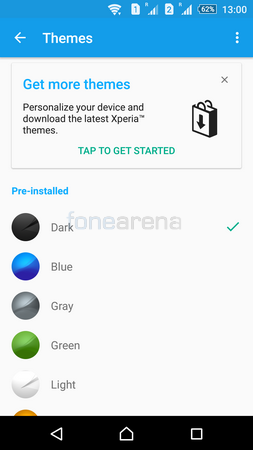
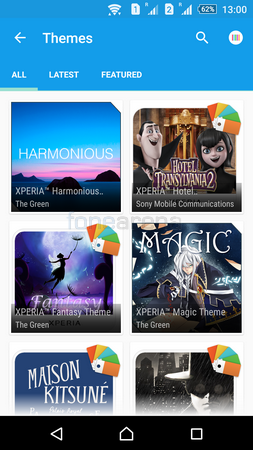
Storage, Connectivity and Performance
The Z5 in India is the Dual-SIM variant which is a nice feature to have especially considering that hardly any flagships come with dualSIM support in India. Both the SIM card slots support 4G LTE and the phone takes 2 nanoSIM cards through the tray that is hidden behind the protective flap. The phone can have one card on LTE at a time while the other will move to 2G only mode.
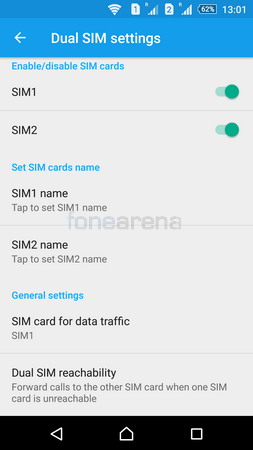
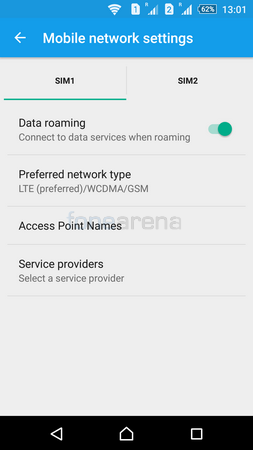
Starting with the Z3+, Sony shifted to a single 32GB storage model and it remains the same with the Z5. Luckily the Z5 also retains the microSD card slot of its predecessors. microSD card slots are something of a rarity these days so it is definitely good to have. The device has around 20.81GB of free memory upon boot. It supports cards upto 200 GB in capacity as well. It also supports USB OTB so you can connect your external hard disks or USB drives when needed.
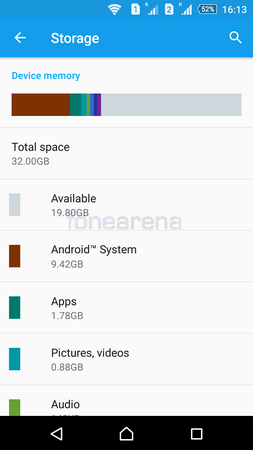
The Z5 has a microUSB port, Bluetooth 4.1 as well as support for dual-band WiFi 802.11 a/b/g/n/ac. It is powered by an octa-core Qualcomm Snapdragon 810 chipset and has 3GB of RAM as well. As you would expect, the device performs quite well but isn’t the leader save for a few benchmarks. You can see a few benchmark results below but for the full-fledged benchmarks, visit this post.
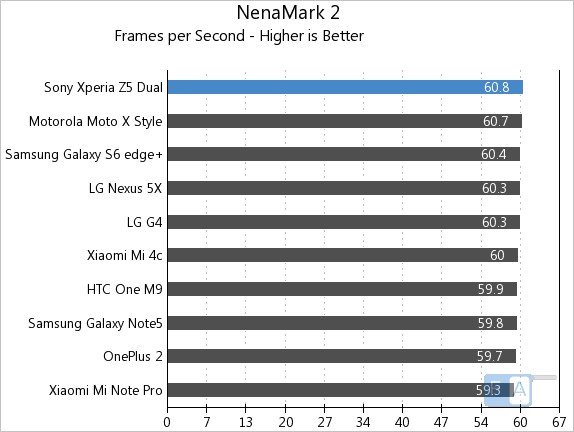
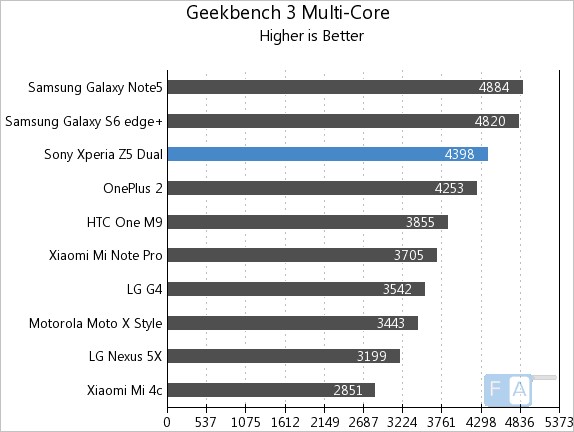
The phone performs most tasks with ease and we didn’t have any issues with stuttering or lag. Heating too was kept under control except for when using the camera for extended periods or recording 4K. We did occasionally get warnings that the phone might turn off the camera if it gets too hot but it didn’t come to that. On some Z flagships in the past, the camera did that automatically without issuing a warning even. You can check out our benchmarks and gaming review video below to get a better idea about the performance.
httpv://www.youtube.com/watch?v=Qq2O1BpC89A
Music Player and Audio Quality
The audio quality through earphones is one of the best we have seen in recent flagships. The clarity is really good and so is the volume. Even at maximum volume, there is no distortion and there is hardly any stereo crosstalk. The dynamic range is pretty good too and the bass feels strong but natural. The speakers on the other hand do disappoint a bit. Despite being stereo speakers, we feel that the clarity and loudness aren’t as good as we had hoped it would be and that is probably the major chink in the Z5’s armor.

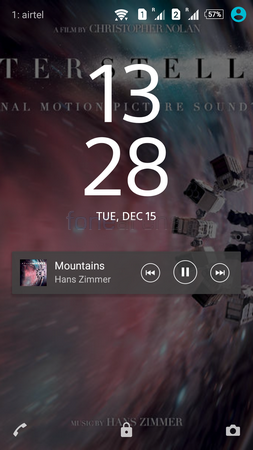
Like most recent Sony phones, the music app is now simply called ‘Music’ instead of ‘Walkman’. It displays tracks that are stored locally on your device as well as integrates Spotify which you can choose to disable if needed. The tracks can be viewed according to songs, albums, artists, folders etc. The now playing screen offers the album art, track info as well as controls to seek/skip, play/pause the track. Users can also enable/disable shuffle and repeat. Additionally, there are options to play the songs externally on another device and even set a timer after which the music will stop playing. This would be useful for people who love listening to music before sleeping. You can also add the song to favourites/playlists, share it and even edit the track information.
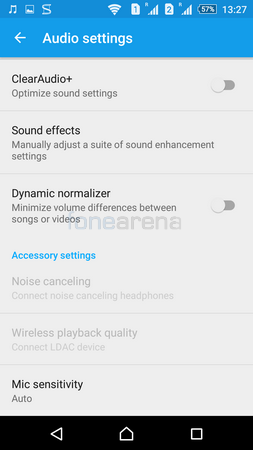
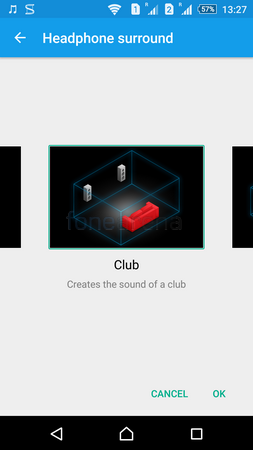
The settings menu offers a wide range of tweaking and customization to provide the best acoustic experience possible. You can enable DSEE HX to convert the tracks to near Hi-Res audio quality if you are listening over headphones. There is an option for ClearAudio+ which basically increases the clarity of the songs. You can also choose the reverb effect to mimic a living room, studio or even a concert hall. The dynamic normalizer makes sure that the tracks are all of equal volume so that you don’t have to keep fiddling with the volume controls ever so often. There is an equalizer which you can choose presets from or tweak to your own liking. There are even settings for noise cancelling headphones or earphones. All in all, this is one of the most advanced music players available on a smartphone today and it really provides you the ultimate listening experience.
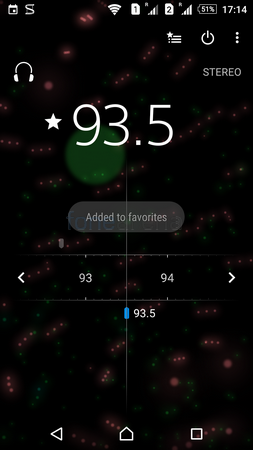
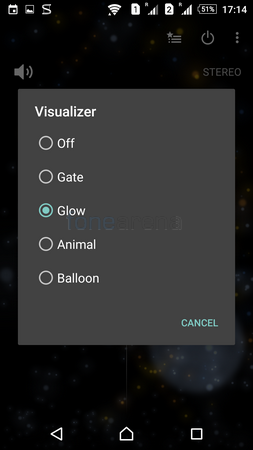
There is a built-in FM radio app that has a visualizer. You need to plug in your headphones or earphones which will act as an antenna after which you can either listen to the radio using earphones or the built-in speakers. You can choose your own region, visualizer and even make use of TrackID to immediately recognize the track that is being played.
Camera
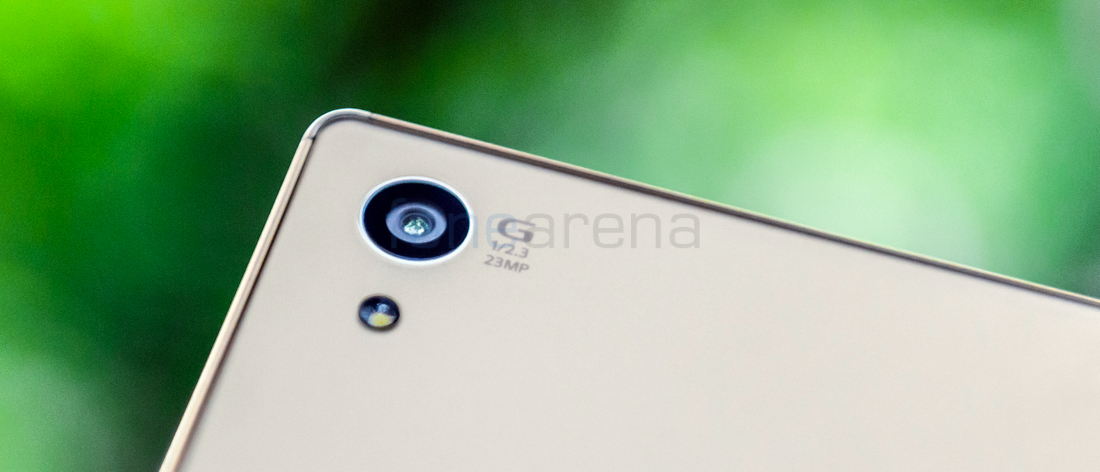
The camera is one of the major changes in the Xperia Z5 compared to the previous Z flagships from Sony. The Z5 receives an upgrade from the 20.7 Megapixel sensor that Sony has been using since the Z1. The new 23 Megapixel sensor is 1/2.3″ in size and has a maximum aperture of f2.0.
The autofocus is one of the fastest on any smartphone right now and the amount of detailing is good too. Colours are quite natural with good white balancing as well. The performance is good in well-lit conditions however noise does creep in during low light conditions especially in auto mode. You can overcome that by manually selecting a lower ISO which does the trick in most cases. The issue however is that the user cannot select the ISO manually or choose a scene mode at 23 Megapixel (4:3 aspect ratio) or 20 Megapixel (16:9 aspect ratio) resolution even in Manual mode. In order to choose a scene mode or manually select the ISO, the user needs to choose a resolution of 8 Megapixel or less in either 4:3 or 16:9 aspect ratio. Once you do so, the ISO goes all the way upto 3200 and the performance is pretty good. We do understand that at such high Megapixels, the noise levels would be higher but the solution isn’t to take away ISO controls fully but rather to fix an upper ISO limit like the did on the Z3. The Z3 allowed users to choose upto ISO 800 in 20 Megapixel mode but upto ISO 3200 in 8 Megapixel modes. We hope that Sony allows this to be changed with a future firmware update. The dynamic range is quite good too especially when using the HDR mode which also works well at night. You can click on any of the photos below for the full resolution samples.
The photos on the left are taken in normal mode while the photos on the right are taken in HDR mode.
The front-facing camera has received a major bump in terms of resolution. Now the Z5 has a 5.1 Megapixel front facing camera of the Z3+ compared to the 2.2 Megapixel units on the previous Z series phones such as Z3 and Z2. The performance from the front camera doesn’t really do much justice compared to the main camera. Images lack detail and often take too long to capture. This means that you’ll have to remain quite steady to capture a shot. However, it does produce bright and clear images which is a good thing to have especially when there is low light.
Video recording is great especially in 4K resolution however the field of view becomes narrower in 4K mode. The stabilizer feature works decently on 4K video in the standard mode but where it really excels is using the Intelligent Active mode. With Intelligent Active mode turned on, the videos are one of the smoothest we have seen on any smartphone available in the market. Intelligent active stabilization works only for 1080p at 30fps while the 1080p at 60 fps and 4K at 30 fps supports only standard stabilization. It is weird that Sony hasn’t included a dual-tone or even a dual-LED flash with their camera even though the camera is one of the USP’s of the device. The LED flash isn’t very powerful and in most cases doesn’t really help much. Luckily the device has a good dynamic range and good performance in low light which is good enough for most occasions.
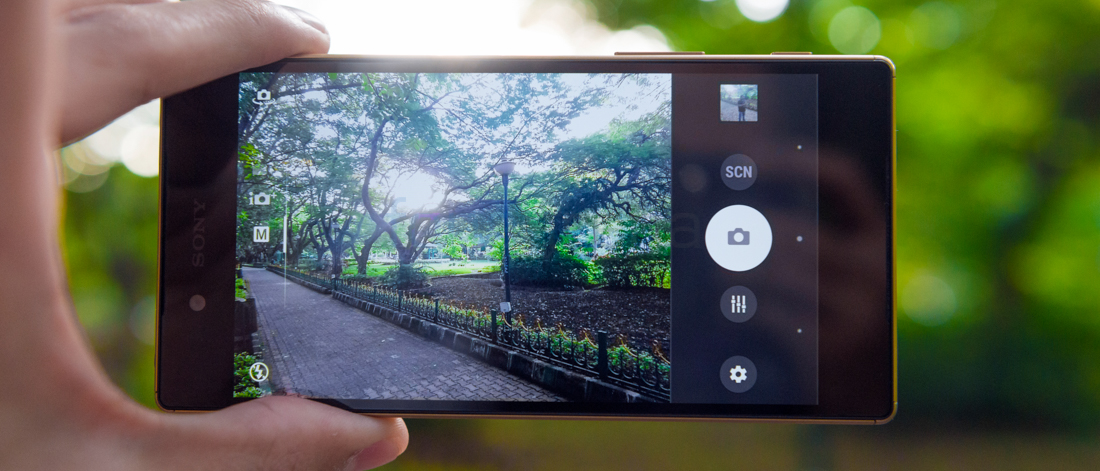
Here is a 4K video sample
httpv://www.youtube.com/watch?v=2AkxiC2VGnk
Here is a 1080p samples at 30fps with Intelligent Active Stabilization
httpv://www.youtube.com/watch?v=NdLvn4uJrLU
Coming to the software, the Z5 has one of the most advanced camera UIs currently. It offers a wide range of controls especially for photos. When held in landscape mode, you have the flash toggle at the bottom left corner and the camera switch at the upper left corner. Between these two, you have the mode switch which consists of Superior Auto, Manual, Video and Apps. At the bottom, you have the settings shortcut at the left, the quick controls for white balance and exposure, the shutter key, the scene key as well as the gallery shortcut. You can enable grid lines to help you compose your shot better. There is a self-timer option along with settings for resolution, ISO and HDR. You can choose between the various metering and focus modes as well as a smile shutter. You can even select how much of a smile needs to be present to trigger the shutter. You have the usual touch to capture, volume key functions, sound options etc. You can also implement touch block feature if you want to take photos underwater for example. Any touches on the screen will be neglected and instead the focus will be on the hardware shutter button itself which can be used to focus and take the shot.
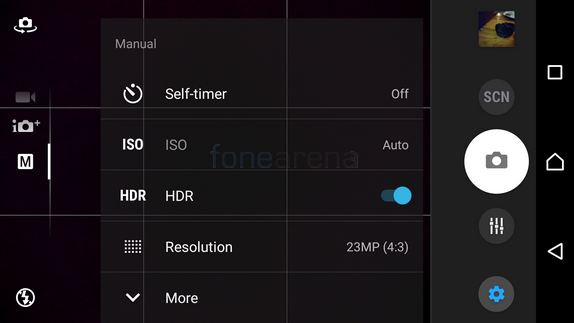
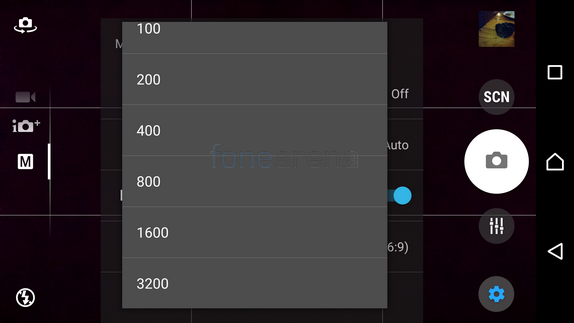
The hardware shutter key is something that we’ve always liked about Sony, it is a dying trend in the pursuit for thinner smartphones but we would take a hardware shutter button over a slimmer phone anyday. The two stage key offers good feedback and can be programmed to quick launch the camera app or even quick launch and take a photo or capture video without having to unlock or wake up your device separately.However, it will do this in auto mode and if you do need to access manual mode, you will have to bypass the security authentication. The main thing that needs to change about the Z5 camera is RAW support. As of now, Sony doesn’t have the feature but with such a good quality camera, it deserves one. We hope that Sony will do its best to release RAW capture as soon as possible.
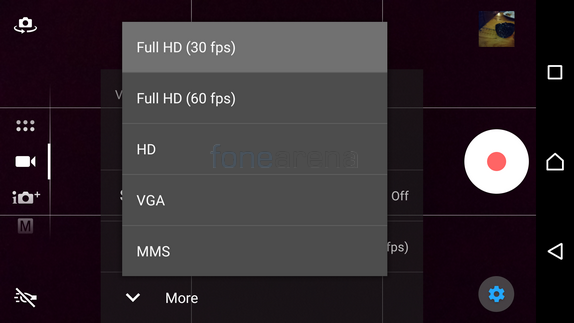
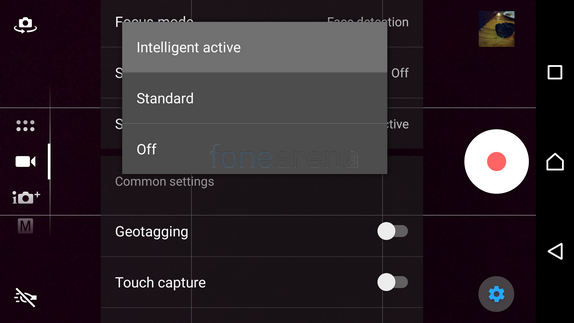
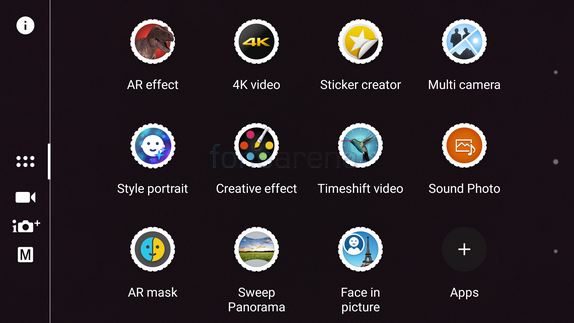
Battery Life

The Z5 comes with a smaller battery than its predecessors. The 2900mAH battery is non-removable but it does support Qualcomm Quick Charge 2.0 which will charge your phone by 60% in 30 minutes. Unlike the Z series smartphones of the past, the Z5 actually doesn’t have stellar battery life. The smartphone scored a one-charge rating of 10 hours and 38 minutes in our battery tests which is quite average. If you are a heavy user like me, the phone won’t last you an entire day but at least when it does run out of juice, you have a quick charging feature which will allow you to get up and running in no time. Check out the complete set of Sony Xperia Z5’s battery life test results here.
Conclusion

The Sony Xperia Z5 is a really capable smartphone and a worthy successor not just to the Z3 but to the Z3+ as well. It may not break free from Sony’s design language and that is probably one of the reasons why it may go unnoticed. But it is every bit a flagship material as its competitors are. Despite the battery life taking a dip and the loudspeaker not performing as well as expected, the smartphone still has a lot going for it. The list of pros and cons itself will give you enough reasons to buy one. It definitely is a bit expensive at Rs 48,000 but it offers some features that aren’t available on other flagships at the moment.
Pros
- Great Build Quality and Attractive Design
- Great Camera Performance
- Dual-SIM 4G LTE Support
- microSD Card Slot
- Buttery Smooth Video Stabilization at 1080p 30fps
- Fast and Responsive Fingerprint Sensor
- Good Music Quality and App
- Waterproof
Cons
- Average Loudspeaker Performance
- Battery Life Below Expectations



